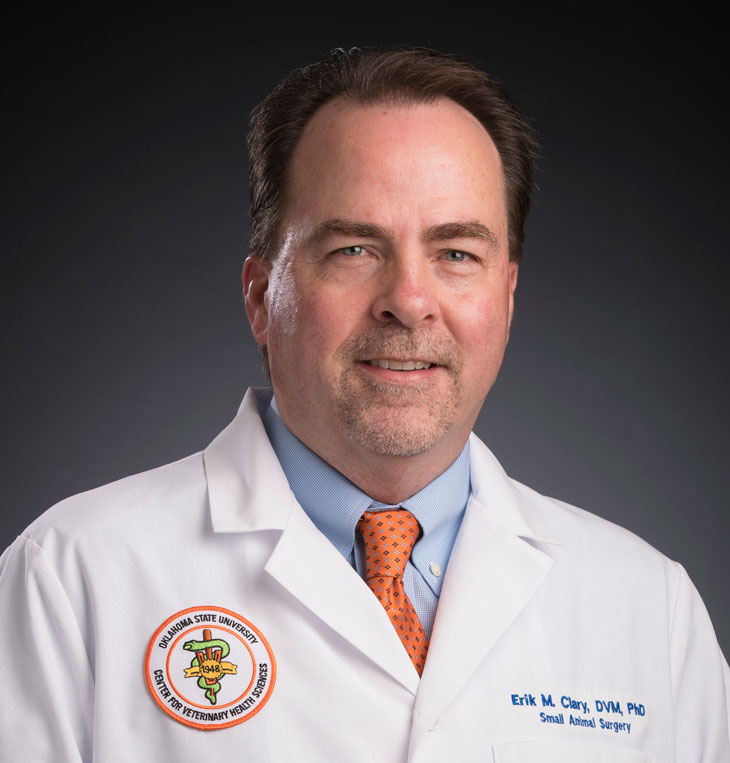
Vet Med Faces of Research: Dr. Erik Clary
Monday, August 3, 2020
Erik Clary, DVM, Ph.D., DACVS, associate professor of small animal surgery and bioethics at Oklahoma State University’s College of Veterinary Medicine, has been conducting research for more than 30 years. The interest, he says, was first kindled by an undergraduate research project with suckling calves and developed fast as he took on graduate studies and then advanced clinical training that exposed him to the field of surgical research. Advancing surgical science and technologies has been the primary focus of his subsequent research activity conducted in medical academia, the private sector, and now at OSU.
“My research here at OSU aims chiefly to improve both human and animal health through collaborative investigations that bring together colleagues in the medical (human and veterinary) and allied sciences,” said Clary. “For example, one project recently initiated has us partnering with medical researchers in the School of Medicine at the University of California San Diego to identify genomic alterations in canine solid organ tumors, knowledge of which could enhance both our understanding of cancer development and efforts to deliver safer and more effective treatments.”
As a veterinary surgeon also serving in OSU’s Veterinary Medical Hospital, Dr. Clary’s clinical activity is wide-ranging and includes much work in orthopedics. His research reflects the varied effort.
“Not long after I arrived at OSU, I connected with colleagues from OU Medical Center and the University of Central Oklahoma on research that continues to the present and is focused on increasing the durability of joint replacement devices,” Clary noted. “Many people outlive the useful life of their joint implant, and when that happens, revision surgery is often required. With this research, our goal is to reduce the need for revision procedures that can be very complex and prone to serious complications.”
Joint replacements are also performed in animals.
“Hip replacement for dogs has a long history,” continued Clary. “Premature implant loosening is a recognized issue and so I anticipate application of our research to that situation. In addition, the implant modification strategies we are researching may apply to other orthopedic devices. In that vein, we have another study underway that aims to improve holding strength of bone anchor devices that we use in small dog knee surgery.”
Asked what a good day in the lab looks like, Clary responded, “While it’s always good to receive news of a funding award or that your latest article has been accepted for publication, in the day-to-day conduct of research, a good day is one where problems are solved and useful data generated.”
If you would like to support research at the OSU College of Veterinary Medicine, please contact Ashley Hesser, assistant director of development with the OSU Foundation, at ahesser@osugiving.com or 405-385-0715.
CONTACT: Taylor Bacon | Public Relations and Marketing Coordinator | 405-744-6728 | taylor.bacon@okstate.edu
